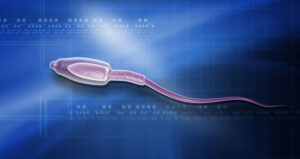What Are The Blocked Sperm Duct Symptoms?
Do you want to know what are the blocked sperm duct symptoms? And how it is related to male infertility? If yes, then welcome. You are in the right spot because, in this article, we will take an in-depth look at it. So, if you want to know blocked sperm tube symptoms, stay tuned.
Male infertility is caused by one or more of three main factors. To begin with, a low sperm count (Oligospermia) might make it difficult to conceive.
Second, there may be issues with the transit of sperm from the testes to the vagina. Such sperm transport abnormalities account for 10-20% of male infertility cases. The third issue arises when aberrant sperm is produced (Teratospermia).
Table of Contents
What is the Route the Sperm Must Follow?
The testes are two egg-shaped glands that generate sperm. The testes are located near the base of the penis in the scrotal sac. It takes around 70 days for sperm to be created and matured.
The sperm is sent from the testes to the epididymis, where it acquires motility (swimming ability). The sperm is ready to migrate out during the next orgasm after about ten days in the epididymis.
Muscle spasms during an orgasm push sperm and some fluid from the testes to the vas deferens. The duct that transports sperm to the urethra.
The urethra receives a combination of sperm and fluid known as semen. The urethra transports the sperm to the tip of the penis, where it is discharged. This emission during orgasm is referred to as ejaculation.
What Problems Arise in Sperm Transportation?
Blockages may hamper sperm transportation in the several channels that transfer sperm from the testes to the urethra. Congenital diseases, acquired disorders, and functional blockage are the three primary difficulties that arise in sperm transportation.
Congenital Disorders
These are congenital disabilities that have an impact on male fertility. They include insufficient sperm duct development, duct atresia (natural obstruction), and a lack of seminal vesicles to store sperm. This category includes any additional anatomical problems of the male reproductive system present from birth.
Acquired Disorders
A reproductive system disorder or infection causes these. Scarring may occur due to inflammation. Scars in the ducts may obstruct sperm transmission, resulting in no place for the sperm to migrate.
The cutting of sperm transportation tubes after hernia repair also affects motility. Other blockages may form as a result of surgery on another organ.
Functional Obstruction
These are conditions that may prevent sperm migration, resulting in male infertility. These include disorders such as nerve damage from an accident, surgery that has hampered the capacity of the ducts to carry sperm, and spinal cord injury that has affected muscle activity. Tranquilizers, antidepressants, and blood pressure medications may affect the neurological system.

What Are The Blocked Sperm Duct Symptoms?
Sperm duct obstructions cause a significant proportion of male infertility cases. However, in most instances, there are no visible indications or symptoms that indicate this illness. If the obstruction results from an infection, there may be aberrant penile discharge with a strange odor.
Inflammation of the penis and pain while passing urine or ejaculating has been described in certain instances. When there is a blockage, the amount of ejaculated sperm may also be reduced. To determine if there is a blockage in the sperm transport system, semen analysis and transrectal ultrasonography are necessary. The blockages might be found in the seminal vesicles or the ejaculatory ducts.
Treatment of Blocked Sperm Tube
Most stumbling blocks in the sperm transport path may be removed with specialist surgery. The lack of vas deferens is the only ailment that does not have a surgical cure. To unblock the sperm transportation channels, transurethral resection of ejaculatory duct (TURED) surgery, vasoepididymostomy, and microsurgical vasovasostomies may be done.
Treatment will be recommended based on diagnostic tests that show the true nature of the issue.
The surgical procedures are normally performed under general anesthetic and might take many hours to complete. The recovery period varies depending on the treatment approach and might range from days to fortnight. During the healing phase, patients are recommended to avoid any hard physical activity.

